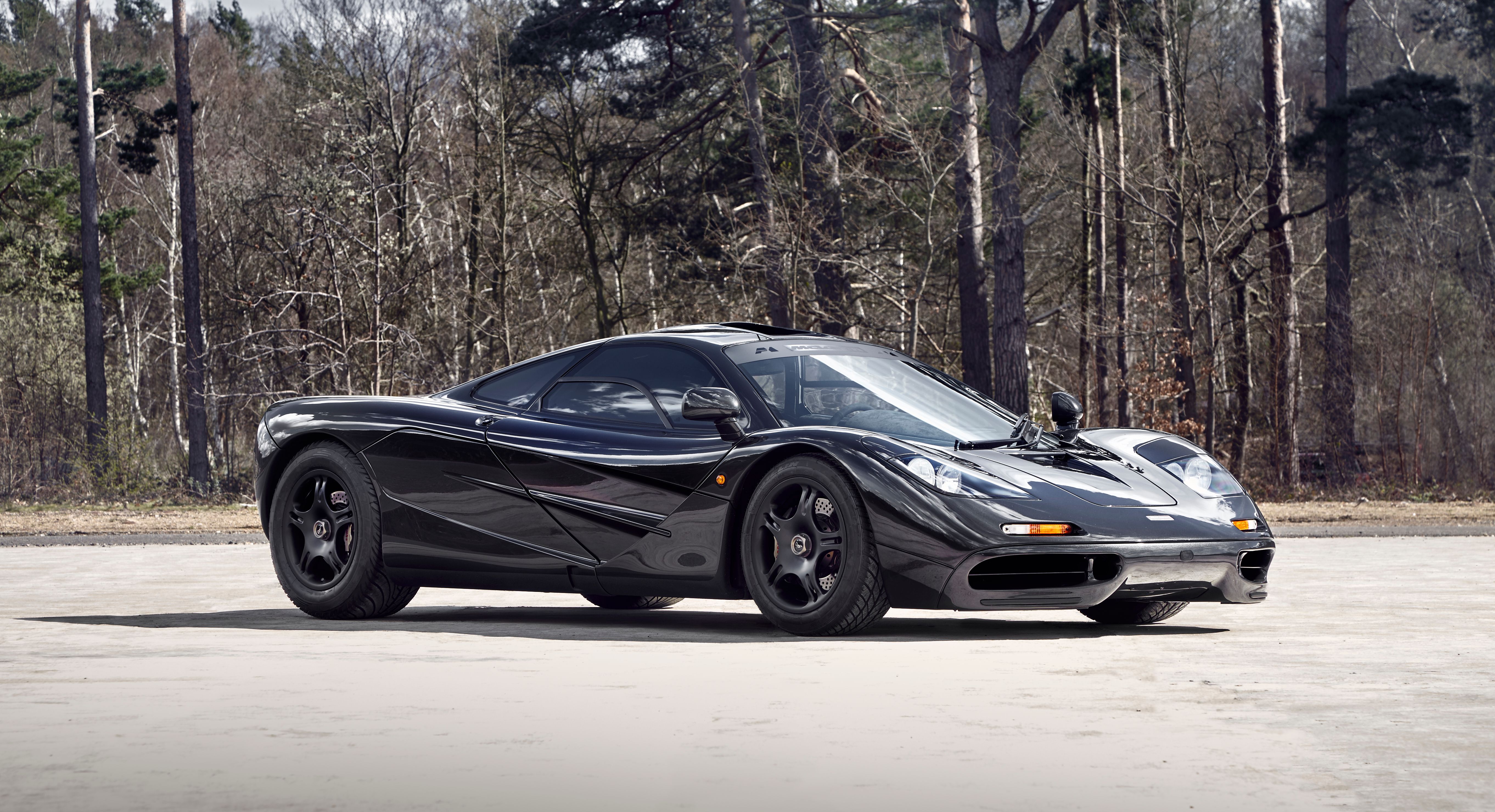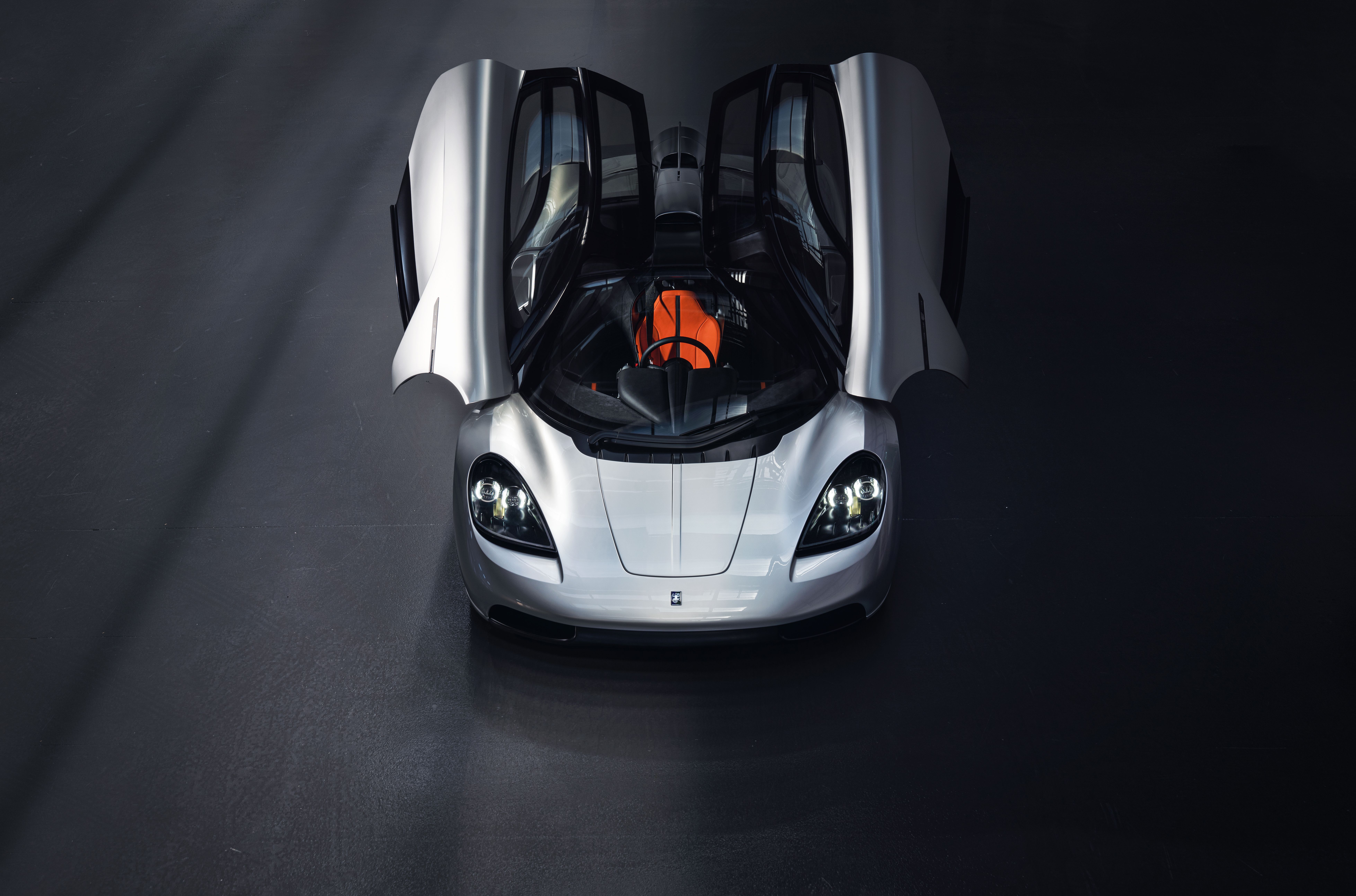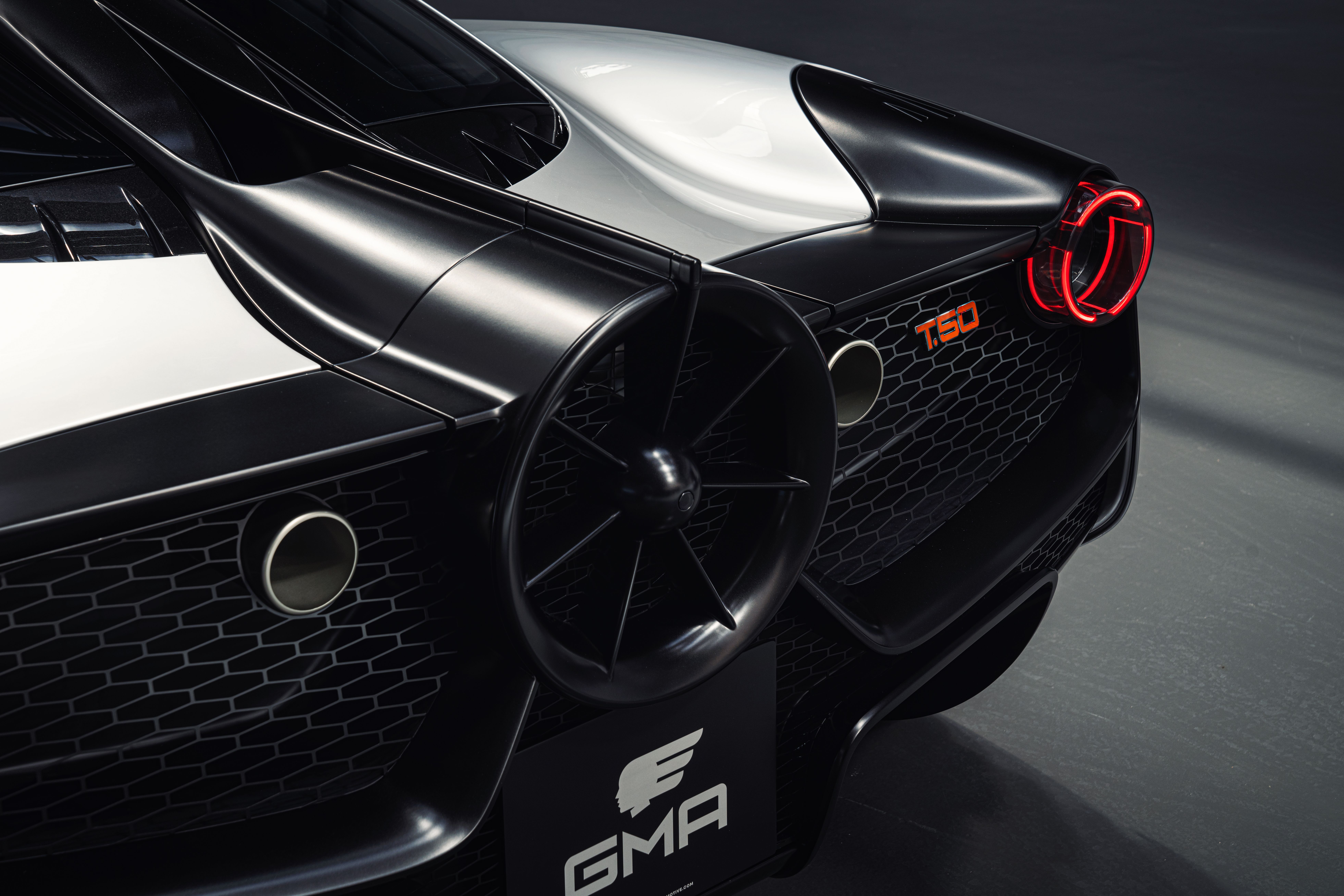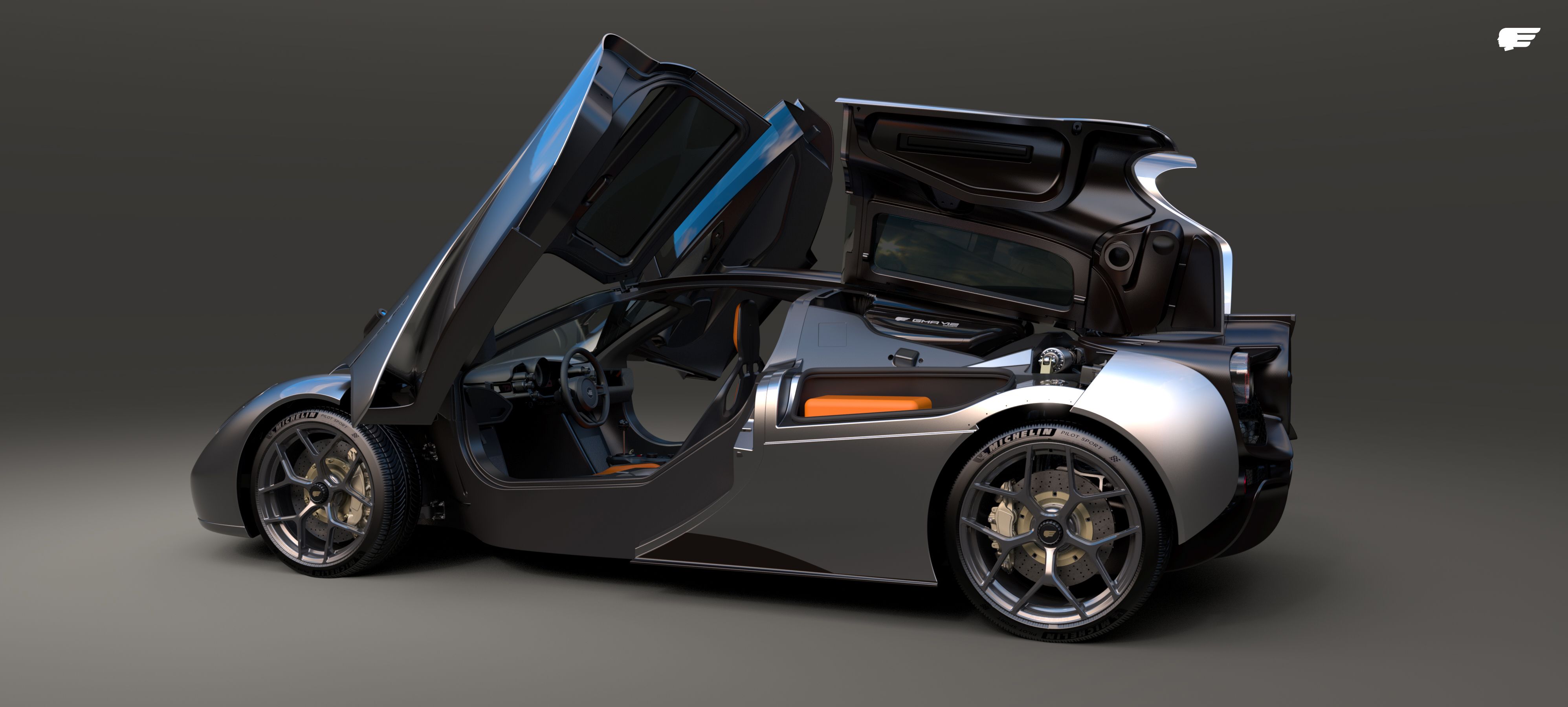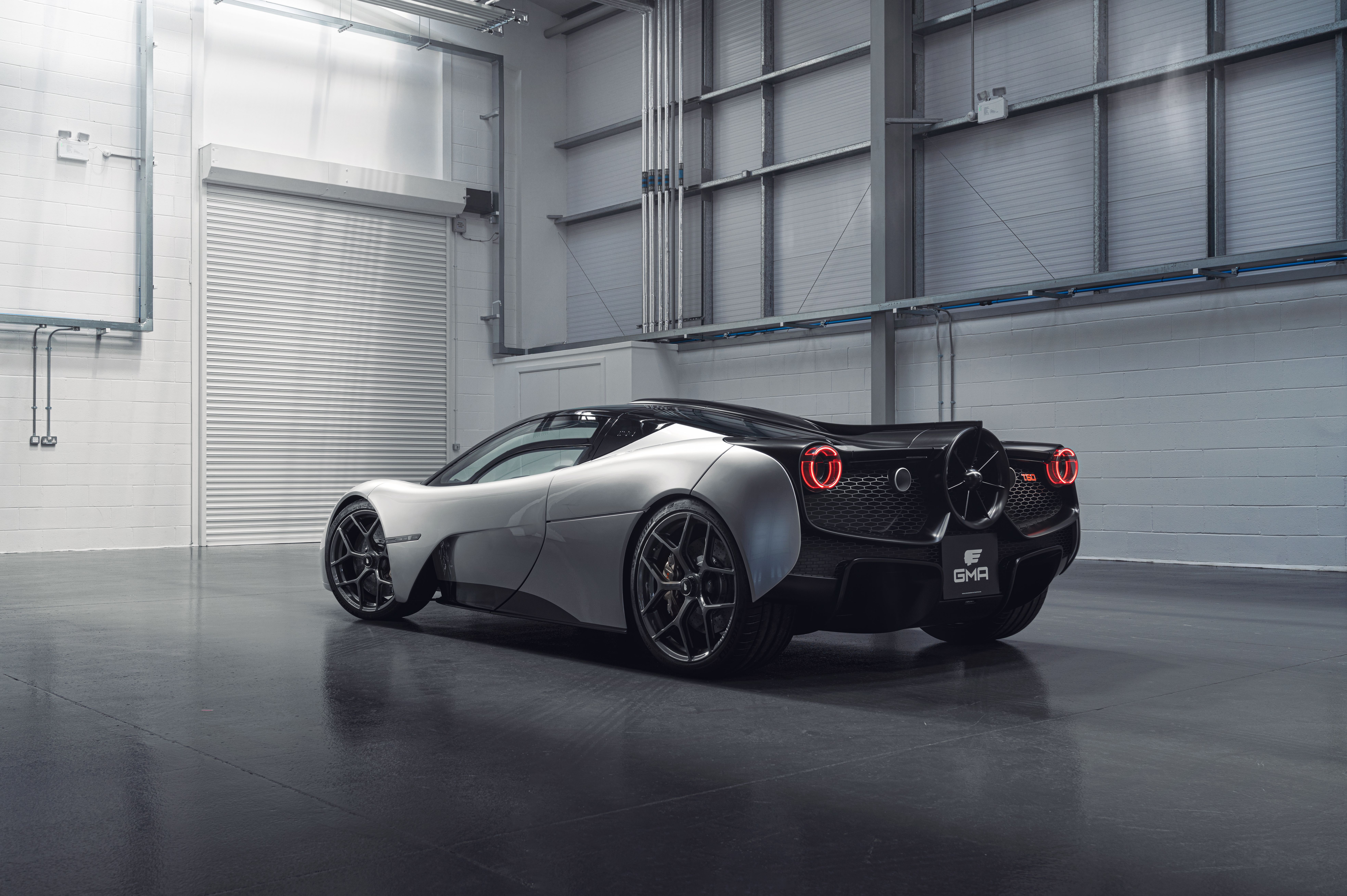The McLaren F1 was, for almost 15 years, the world's fastest car and it still is the fastest car powered by a naturally aspirated engine. Beyond the impressive performance, though, the F1 is a civilized grand tourer capable of seating three adults and, because of McLaren's unique maintenance and repair program, it's virtually indestructible.
But it isn't perfect and the one man that has kept a record of all of its flaws is Gordon Murray, the F1's designer. Now, as he prepares to begin testing his latest creation, the T.50, Murray was able to open up on all the niggly bits and pieces that annoyed him on the F1 and that he was able to get absolutely right on the T.50.
Even the ultimate car of the '90s wasn't perfect
"The 627-horsepower F1 is just what design director Gordon Murray pledged it would be: the ultimate motoring experience, the closest sensation to a street-legal grand prix car," wrote CAR Magazine's Roger Bell al the way back in 1994 upon driving "McLaren’s BMW-powered blockbuster," as he called it. Benchmarked against Jaguar's XJ220, Bugatti's EB110, Porsche's 959, and Ferrari's F40, the F1 makes them all seem "overweight, underpowered pussycat," Bell added.
"It can outperform every other road car by a large margin. But there's more to it," underlined Road & Track in its November 1994 piece on the car, the same XP5 example that had previously been sampled by CAR Magazine. Finally, Autocar's Andrew Frankel remarks, looking back at driving the car back when it was new that the F1 "wasn’t the next step in the 959, F40, XJ220, EB110 progression; it was another level, unimagined by the likes of me until that very moment it exploded forward in a haze of tire smoke." And the praise goes on, pundits upon pundits in awe at the way the power is being delivered, at the way it eats miles of open road as if you're sat in an F16 fighter jet, and at the way everything is so driver-focused while there also being room for two passengers.
The most extreme examples of the F1 sell for as much as $20 million and the race-going version has won Le Mans outright on its first attempt, a first for GT-derived race car. It also won races all over the world dominating many a racing series and McLaren couldn't match it because, in all fairness, it never even dared to have a go at it. So, how come there's someone out there that's been thinking about the faults of the F1 ever since the car was new a quarter of a century ago?
Well, that's because the man in question is the F1's creator, Gordon Murray himself. Now in his 70s, Murray celebrated 50 years in the business of automotive design and engineering not too long and decided to mark the occasion in a truly unique way. While he did build other fast cars after the F1 (the LCC Rocket immediately springs to mind), none followed in the footsteps of McLaren's first road car.
We've already delved deep into what makes the T.50, as it's been named, special, talking about how it channels the spirit of the F1 as well as that of one of Murray's most famous F1 designs, the Brabham-Alfa Romeo BT46B 'Fan Car'. Now, however, we're looking at all the things that Murray loathed on the F1 and that he fixed with the T.50.
The styling isn't spot on
|
|
ids=928366,928367 |
no_overlay=false |
before_label=McLaren F1 |
after_label=Gordon Murray T.50> |
Murray himself came up with the general shape of the McLaren F1 while Peter Stevens carried out the bulk of the detail work on the car. As a past owner of XP-3, the third F1 mule and, as such, the earliest surviving McLaren F1 in the world, Murray had plenty of time to look at the car and his main complaint is that the car's backbone which ends with that unmistakable roof scoop is too wide. As you'd expect, Murray even has a number for it saying that the ram air intake on the roof should've been 1.96 inches narrower to better fit in given the car's width.
On top of that, Murray doesn't like the rather flat surfacing of the rear deck, arguing that he would've liked the rear fenders to be slightly more curved or "muscular" as he put it. Sadly, with clay mock-ups being the go-to technique back in the '90s, it proved hard for Murray to spot the highlights on the body and to make the desired changes to the shape to suit his tastes.
The light clusters aren't the best
To save some money, Murray says, the team borrowed the taillights you see on the McLaren from Iveco which is why there are images on the internet of some nondescript buses sporting the same sort of rear lights as an F1. To add insult to injury, the headlights aren't bespoke pieces like most of the other parts making up the F1, instead being off-the-shelf Halford's units that are almost useless beyond 100 mph or in deep fog.
The T.50, on the other hand, comes with LED light clusters at both ends as well as a narrower spine.
The A/C was rubbish
The main purpose of the F1 was to give the person behind the wheel the ultimate driving experience. To add to that, the McLaren also had to be practical so as the owner could drive it to the shops or use it to take the kids to school.
Talking to Top Gear, Gordon let loose the culprits behind one of the F1's most notorious faults. On the one hand, the compressor wasn't really doing much when the car was idling or was running through rush-hour traffic at low rpm because it'd been designed to do the heavy pulling at 8,000 rpm and that's when it was making its presence felt. Moreover, the cabin exit air valve was too small, about 1/3 of the necessary size to be precise.
Getting in and out of an F1 isn't pretty
The McLaren F1's cab-forward design has been inherited by the T.50 which sports the same three-seat layout. Murray wanted the F1 to have a central driving position to further emphasize the car's focus on the driver and the driving experience as a whole as well as a way to underline the fact that this is a road car built by McLaren, the ultra-successful F1 team. But putting a seat in the middle and two either side isn't that easy when you also have to conform to a certain number of safety regulations. The regulations pushed for rather high sills either side of the driver's seat separating it from the two recessed passenger seats.
As you'd expect, vaulting over those sills and then sliding below the upward-opening doors isn't easy and you won't look particularly gracious doing it. The T.50 comes with similar dihedral doors but the safety structure's been moved to the car's rocker panels and the cabin as a whole is wider (both of the passenger seats are 1.96 inches wider than in the F1) and roomier making ingress and egress a bit of an easier task.
The steering is heavy at low speeds
Moreover, the steering is mechanical and unassisted and what that means is that it's incessantly heavy at low speeds. Parking an F1 is hard because of it but the problem's gone with the T.50 as the mechanical steering is aided by a little it of electronic 'push' that engages automatically at low speeds to help the driver turn the wheel effortlessly.
The storage compartments aren't easily accessible
McLaren's F1 sports a tiny frunk but you've got no room to store stuff in the front as that's where the battery is located. For practicality's sake, McLaren fitted the F1 with two side storage compartments, one in front of each rear wheel. The hatches of these compartments are latched down at the bottom and when the hatch is opened it doesn't go all the way down at a 90-degree angle and, instead, you're left with a small gap through which you must slide whatever you plan on getting in your F1. If that wasn't bad enough, you may also scrape your leg when you open the hatch in the first place.
The T.50, meanwhile, mugged a design idea from the De Tomaso Mangusta and will come with gullwing-style twin engine covers that open upwards to reveal not only the midship-mounted Cosworth V-12 but also the storage compartments on either side of the car's spine, in front of the engine. Also, the T.50's interior hides 30 liters worth of storage space (1.05 cubic feet) beyond what these exterior storage compartments can take.
The F1's bespoke tires cost a fortune
They are 235/45ZR17 in the front and 315/45ZR17 in the back and a set of brand-new rubber for an F1 costs some $7,000 with the whole tire-swapping operation setting you back a whopping $50,000. While the owners of all of the F1s are ultra-rich, they still complained about having to pay the MSRP of a mid-range Mercedes-Benz C-Class every time they need to change tires. As a result, the T.50 runs on standard mold tires so you can get any sort of performance tire you wish. The dimensions are 235/35 R19 in the front and 295/30 R20 in the rear.
Oh, and another thing: the clutch on the F1 needed to be fiddled with ever 10,000 miles or so depending on your driving style and the fuel tank was of the bag variety like in many racing cars. The issue with a bag tank is that it had to be removed from the car and refurbished every five years which was and is a lengthy (and insanely costly) engine-out operation that can only be done at McLaren's Woking HQ.
The McLaren F1's fans are almost ineffective
The fact that Ron Dennis barely afforded Murray Walker and his team any time in the F1 team's wind tunnel has been well documented and it all got ridiculous when Murray went back to Dennis asking him to give him some time to develop the F1 GTR. Reportedly, all Murray had was under 25 hours of wind tunnel testing. There's no wonder, then, that the brilliant designer behind the BT62B had no time to implement that infamous fan in the F1's design.
The fans only interacted with the tunnels of the diffuser where they were situated and, with no valves to shut off to seal the air underneath, their effectiveness was greatly reduced, Murray saying that they probably contributed to an increase of no more than 4-5% in downforce when they spooled up under braking (that's also when the rear flap lifted increasing the downforce by 30% in all).
The T.50, of course, is equipped with a huge fan that works in conjunction with the entire diffuser and there are also two flaps that move up or down to create downforce or, if needed, to drastically reduce it. Of course, this device isn't legal in racing where moveable aero elements are banned, but fear not as the T.50 already makes three times the downforce of an F1 even when the fan isn't working and there's no active ground effects at play


